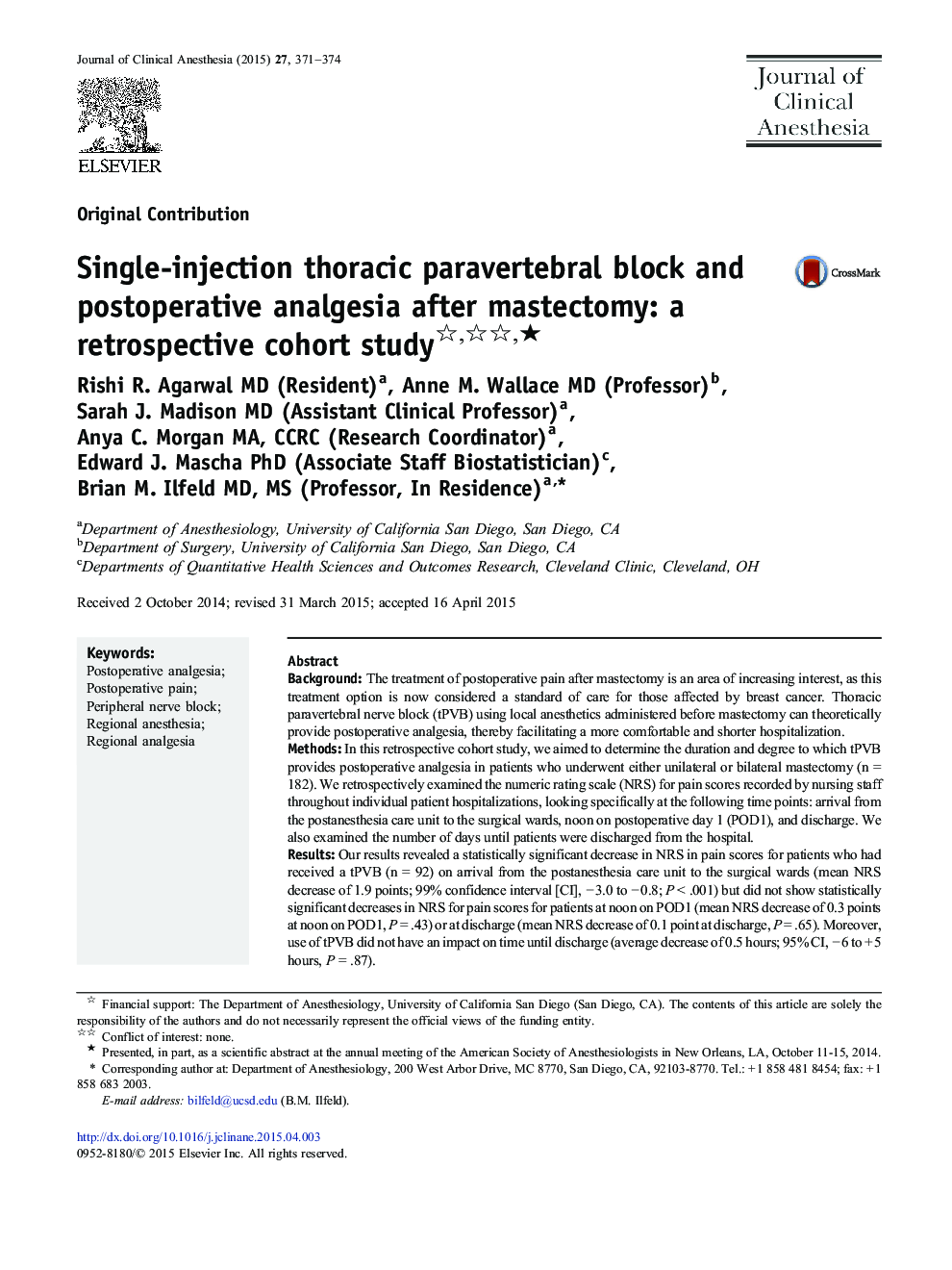| Article ID | Journal | Published Year | Pages | File Type |
|---|---|---|---|---|
| 2762384 | Journal of Clinical Anesthesia | 2015 | 4 Pages |
•We examined patients who underwent either unilateral or bilateral mastectomy.•We determined the duration and degree that thoracic paravertebral nerve block provides postoperative analgesia.•We examined the numeric rating scale for pain scores from 182 individual patient hospitalizations.•Thoracic paravertebral nerve block provides postoperative analgesia in the immediate postoperative period after mastectomy.•Thoracic paravertebral nerve block does not provide postoperative analgesia after the first day of surgery.
BackgroundThe treatment of postoperative pain after mastectomy is an area of increasing interest, as this treatment option is now considered a standard of care for those affected by breast cancer. Thoracic paravertebral nerve block (tPVB) using local anesthetics administered before mastectomy can theoretically provide postoperative analgesia, thereby facilitating a more comfortable and shorter hospitalization.MethodsIn this retrospective cohort study, we aimed to determine the duration and degree to which tPVB provides postoperative analgesia in patients who underwent either unilateral or bilateral mastectomy (n = 182). We retrospectively examined the numeric rating scale (NRS) for pain scores recorded by nursing staff throughout individual patient hospitalizations, looking specifically at the following time points: arrival from the postanesthesia care unit to the surgical wards, noon on postoperative day 1 (POD1), and discharge. We also examined the number of days until patients were discharged from the hospital.ResultsOur results revealed a statistically significant decrease in NRS in pain scores for patients who had received a tPVB (n = 92) on arrival from the postanesthesia care unit to the surgical wards (mean NRS decrease of 1.9 points; 99% confidence interval [CI], − 3.0 to − 0.8; P < .001) but did not show statistically significant decreases in NRS for pain scores for patients at noon on POD1 (mean NRS decrease of 0.3 points at noon on POD1, P = .43) or at discharge (mean NRS decrease of 0.1 point at discharge, P = .65). Moreover, use of tPVB did not have an impact on time until discharge (average decrease of 0.5 hours; 95% CI, − 6 to + 5 hours, P = .87).ConclusionsSingle-injection tPVB appears to provide meaningful postoperative analgesia in the immediate postoperative period after mastectomy but not after the first day of surgery.
